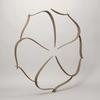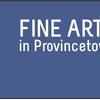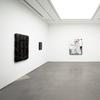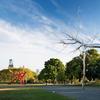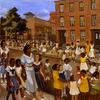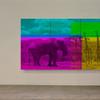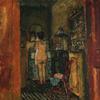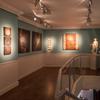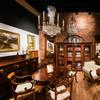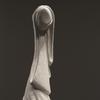MPA: RED IN VIEW Unfolds Mars-Centric Narratives at Whitney Museum
- NEW YORK, New York
- /
- December 06, 2016
Since relocating to California's Mojave desert in 2013, artist MPA (b. 1980; Redding, CA) has been immersed in a broad inquiry into the potential colonization of Mars, often known as the red planet. In this multi-part exhibition the artist looks at Mars as a place for settlement and a resource for our own planet, as well as a site of possible human origin. MPA’s research considers unconventional sources such as mythology, psychic accounts, and personal narratives, as credible authorities. By reflecting more generally on histories of colonization, RED IN VIEW, at the Whitney Museum in New York through Feb. 27, 2017, raises questions of militarism and patriarchy, prompting us to examine our own, often subconscious, colonizing behaviors.
RED IN VIEW is organized by Jay Sanders, Engell Speyer Family Curator and Curator of Performance, and Greta Hartenstein, Senior Curatorial Assistant, with Allie Tepper, Curatorial Project Assistant.
Selected works on view were commissioned by the Contemporary Arts Museum Houston for the exhibition THE INTERVIEW: Red, Red Future, organized by Dean Daderko, curator.
RED IN VIEW unfolds in four parts throughout the Museum.
I. Prelude
December 9 and January 13
Floor 1, Kenneth C. Griffin Hall and John R. Eckel, Jr. Foundation Gallery
A periodic live appearance in the gallery by two Martian moons, Phobos and Deimos.
II. The Interview
Through February 27
Floor 1, John R. Eckel, Jr. Foundation Gallery
The interview is active. You are invited to pick up the phone.
III. Orbit
February 9–19
Floor 3, Susan and John Hess Family Theater
A test. MPA, with artists Malin Arnell and Amapola Prada, inhabit the narrow space between the windowpanes of the theater, overlooking the Hudson River. For twenty-four hours a day over the course of ten days, the space becomes an artificial biosphere: an enclosed, self-sustaining habitat, modeled after an environment where the first settlers on Mars would likely reside. The participants’ conditions emulate those of astronauts orbiting the earth: sleeping in ninety-minute periods and receiving messages on a delay. Everything is recorded and live-edited for Orbit TV, the final document of the trial.
IV. Assembly
February 19
Floor 3, Susan and John Hess Family Theater
MPA hosts a dramatic live finale of Orbit. This theatrical event orchestrates a culminating series of actions within a sound environment by M. Cay Castagnetto.

